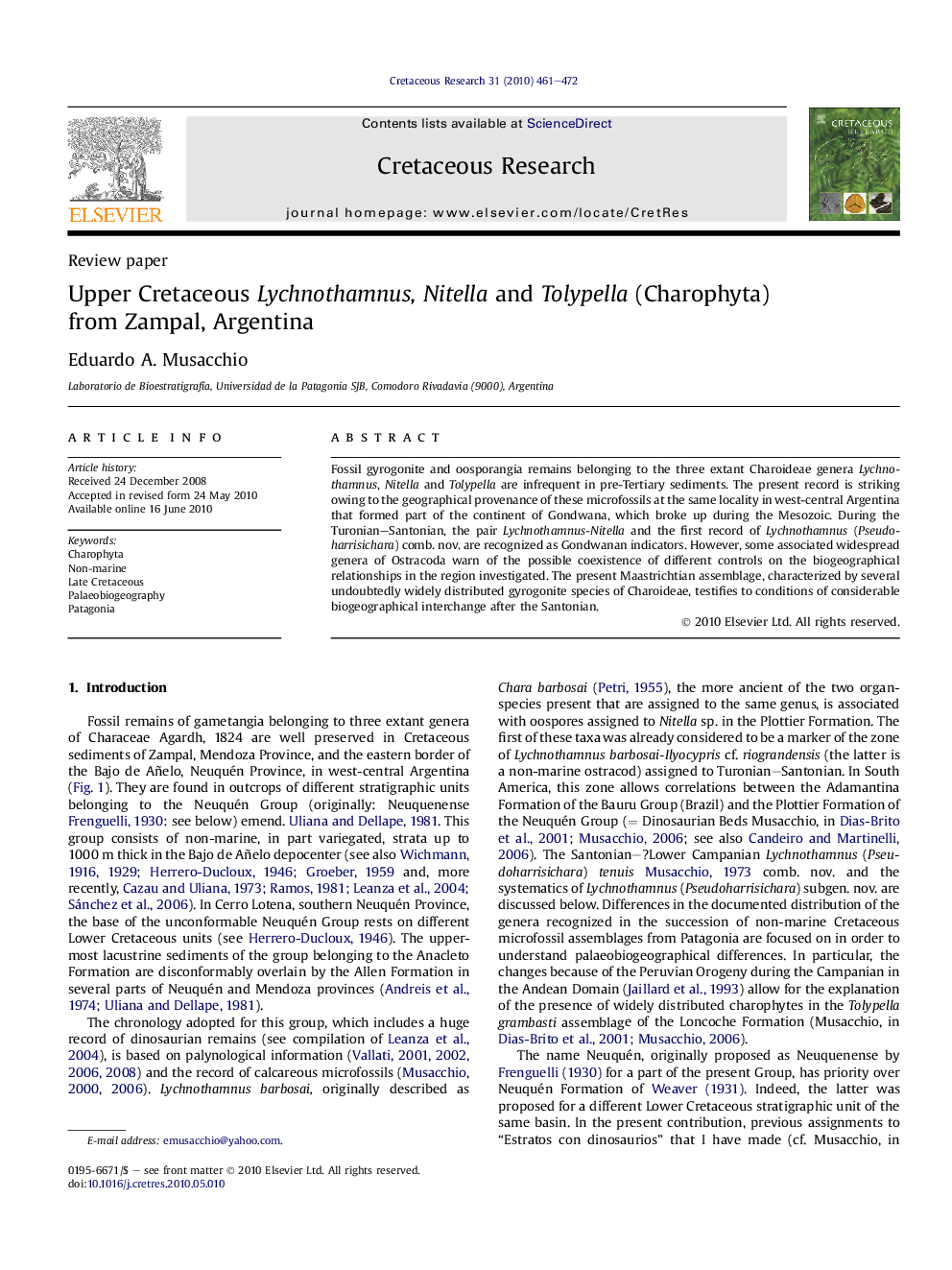| Article ID | Journal | Published Year | Pages | File Type |
|---|---|---|---|---|
| 4747480 | Cretaceous Research | 2010 | 12 Pages |
Fossil gyrogonite and oosporangia remains belonging to the three extant Charoideae genera Lychnothamnus, Nitella and Tolypella are infrequent in pre-Tertiary sediments. The present record is striking owing to the geographical provenance of these microfossils at the same locality in west-central Argentina that formed part of the continent of Gondwana, which broke up during the Mesozoic. During the Turonian–Santonian, the pair Lychnothamnus-Nitella and the first record of Lychnothamnus (Pseudoharrisichara) comb. nov. are recognized as Gondwanan indicators. However, some associated widespread genera of Ostracoda warn of the possible coexistence of different controls on the biogeographical relationships in the region investigated. The present Maastrichtian assemblage, characterized by several undoubtedly widely distributed gyrogonite species of Charoideae, testifies to conditions of considerable biogeographical interchange after the Santonian.
